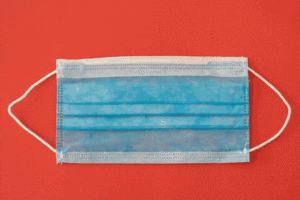 “Official” direction regarding how restaurants should – or are allowed – to handle COVID-19, changes by the hour. Takeout only, limited hours, limited dining-in configurations, disposables only, close for business, limited menus, shift to delivery model, make hand sanitizer instead, etc. – it’s tough to get any momentum when the message changes…and we know everyone is trying their best to share only the good stuff. As restaurant owners, we’re being bombarded with broad, un-tailored advice that we must still interpret in order to apply to our own situations. To help you sift through it, this brief article is aimed specifically at restaurant owners and operators.
“Official” direction regarding how restaurants should – or are allowed – to handle COVID-19, changes by the hour. Takeout only, limited hours, limited dining-in configurations, disposables only, close for business, limited menus, shift to delivery model, make hand sanitizer instead, etc. – it’s tough to get any momentum when the message changes…and we know everyone is trying their best to share only the good stuff. As restaurant owners, we’re being bombarded with broad, un-tailored advice that we must still interpret in order to apply to our own situations. To help you sift through it, this brief article is aimed specifically at restaurant owners and operators.
Financially this thing is already hurting restaurants and it’s only going to get worse. It looks a lot like the Apollo 13 mission when the LM was overloaded with occupants and running low on fuel, oxygen and water. Instead of fighting against the situation they worked with it, using the moon’s gravitational pull to slingshot the LM back to earth. Similarly, we are urging restaurants to act quickly and decisively in order to conserve resources and emerge stronger on the other side. The communities you serve will judge you on how you handle this emergency, how you helped them, and how you cared for your employees. You want to emerge from this crisis as the company that behaved responsibly and helped the community…because you will absolutely depend on them to dig you out when it’s over.
You have two options:
- Close for Business. Restaurants are social and dining at a restaurant is a decision greater than just filling one’s belly. It’s emotional and, today more than ever, folks choose their restaurants for the way they source foods (farm to table, sustainably grown, ethically sourced, etc.), the causes they support and the way they treat their employees. The overwhelming and pervading sentiment is that folks who openly socialize in the current COVID-19 pandemic are selfish. Restaurants – especially full-service restaurants – are THE places where much of this socializing happens. They are the magnets
 for the self-absorbed and ignorant who callously ignore the calls to disengage from society in order to thwart the spread. So what does “closing” mean?
for the self-absorbed and ignorant who callously ignore the calls to disengage from society in order to thwart the spread. So what does “closing” mean?
- First and foremost, you need to do your part for the world by not providing a breeding ground for COVID-19. Remaining open or broadcasting that you are still open invites harsh criticism and can come back to bite you.
- This is a great time to tackle nagging projects – like evolving a new menu or evolving a brunch offering, adding a patio, fixing a roof, resurfacing your kitchen floor (which requires closing anyway), re-covering chairs, deep cleaning behind equipment, etc. These projects keep your employees working ($ for them) and gets you ready for what we hope to be a time when this is all over. It also helps local contractors needing to stay busy.
- Management organization – go after management of your top two cost categories: labor and cost of goods. Similar to tackling projects, it could be time to finally organize your reporting structure, chart of accounts, install inventory systems, re-brand, set annual sales building goals, and implement labor discipline systems.
- How do you pay for it? The FED has established unprecedented interest rates (zero!) in order to help businesses through the crisis. Banks are more lenient than ever before. If you have previous debt, you can roll that into a loan that will cover the cost of several weeks of labor, some PR and your projects. Financing doesn’t get much better than free! I am unaware of any accurate predictions re: when this will all blow over, but I’d borrow enough to get through May 1 plus some operating reserve to handle a closure beyond that.
- Make your “CLOSED” sign friendly but large enough to read from the parking lot versus posting something in size 14 font that customers have to leave their cars and walk to the door to read (i.e. – don’t annoy customers). “Out of respect andcare for our community during the COVID-19 pandemic, we are CLOSED for business. In an effort to support our incredible staff and community tradesmen, we are offering employment to those who want it and are engaging in several facility and operations improvement projects including new menu item research, new TV installations, furniture refurbishing and procedural upgrades. This will help keep people in our community working (employees and tradesmen alike) while making your next visit better than ever when this is over. Thank you for stopping by and please be careful while we all get through this together!”
- Establish a dedicated social media employee to broadcast your efforts on Instagram. Be apologetic and communicate heavily. Consider hiring a PR firm to help you.
- To provide an option for employees you cannot imbed in a refurb project or those who prefer to stay away from work, refer them to unemployment office. Many states are offering online applications.
- When you close, stay organized and create a to-do checklist: What equipment needs to be turned off? Do you leave cash in the safe or deposit everything into the bank? What will you do with your perishable food? Do you have current contact info for all of your staff for when you need to call them back to work? Include a checklist of everything you will need to do to reopen.
- Grocery stores are beginning to limit purchase quantities if they have quantities at all! Consider creative uses for your perishable inventory to create takeout offerings at a discount, then promote them via social media.
- Stay Open for Takeout and Delivery – This works great for businesses that are already established for fast casual and takeout, with drive thru windows and delivery systems. This strategy is dangerous if you don’t have those pieces in place because it isn’t easy to do them well or in a way that makes your brand proud. At least not without strong planning and preparation – meaning several weeks. Slamming out a half-baked strategy can work against you… but if you’re confident that you can do it well, remember a few things:
- Make sure you are able to prepare food safely and that the work can be spread among employees in a way that allows them to work safely. This means limited menus, reshuffling equipment, and establishing work radius rules to protect your employees.
- If you use TOAST as your point of sale system, they are offering takeout ordering and online modules for free to their clients.
- Ideally, you’ll have a PR firm at your disposal to blast social media that you are ready to go.
- In addition to promoting your restaurant, your PR firm can help you create short videos of your chef making his favorite comfort food, sharing crisis-appropriate recipes and injecting lighthearted confidence and calm (Liz Lapidus PR offered this idea).
- Make sure the menu items you offer will travel well. Food that looks great and “worth the price” on a plate often looks anemic in a to-go container and doesn’t travel well, so your customers will wonder why you’re gouging them. Imagine a how a $48 bone in ribeye with mashed potatoes and green beans looks in a to go container . Consider reducing prices across the board in an effort to “take one for the world” – get credit for everything you do by promoting it through Instagram, Facebook, and Twitter.
- As fast as you can, brand your to-go supplies as much as possible. Stickers are quick and easy as are stamps for bags. The quality of your to-go supplies should match the quality of your brand in order to create a positive memory.
- Divert labor by assigning a dedicated person to answer phones, emails, texts, Facebook inquiries. The company that responds quickly to customer concerns (by quickly, I mean less than 5 minutes!) will be remembered – and rewarded – for it.
- Make your instructional signs big enough and strategically placed for customers to read from the comfort of their car. Laminate them and affix them with care vs. taping them to a post for them to get wet with corners turning over or ink bleeding. Show respect for your brand and your customer messaging.
- Update your website, Facebook page, LinkedIn page (and yes, even ask Tom on MySpace to say something about you). Indeed, visitors are driving to you in search of comfort but the best place for them is at home. Don’t let them associate you with something inconvenient or annoying by making information about your decision hard to get.
If you have questions about these notes we will do our best to provide sound advice or to share your questions with appropriate people in our network who can answer. Please email us at info@blueorbiting.com and we will gladly share our opinions and experiences with you as quickly as possible. No charge.
Ray Camillo – Founder & CEO, Blue Orbit Restaurant Consulting
Do you need assistance with advice on operating a restaurant during COVID? We’re here to help! Contact us today, and let’s chat.
